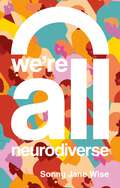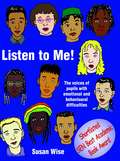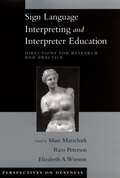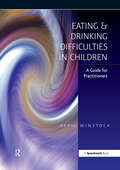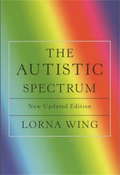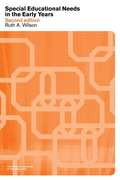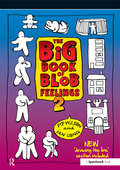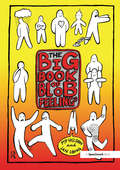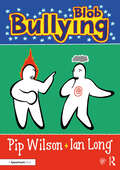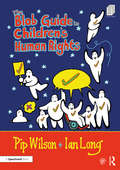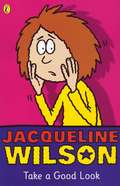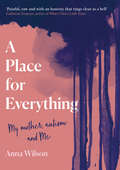- Table View
- List View
We're All Neurodiverse: How to Build a Neurodiversity-Affirming Future and Challenge Neuronormativity
by Sonny Jane Wise"Neurodiversity has helped me understand myself and provided a sense of relief that I'm a whole neurodivergent person functioning as my brain intends.""It's provided me with the language to advocate for myself.""I no longer hated myself. I no longer felt broken. I found a sense of community. A sense of belonging"This affirming and thoughtful guide outlines how and why we need to fundamentally shift our thinking about neurodivergent people. We need to accept differences rather than framing them as a problem, abnormality or disorder. Welcome to the neurodiversity paradigm.At times challenging and radical, Sonny Jane Wise explores the intersections of neurodivergence with disability, gender, sexuality and race. Through interviews, narratives, and the lens of their own raw experiences, they consider how current systems and structures that impact neurodivergent people are rooted in outdated capitalist and racist frameworks, and how these need to change and adapt to be neurodiversity affirming. Sonny Jane's words are a rallying cry to challenge the pathology paradigm. They offer nine principles for facilitating change, reflected in deeply personal stories from the neurodivergent community.Powerful and persuasive, this book is a clarion call for a kinder and more neurodiversity affirming society.
Listen to Me: The Voices of Pupils with Emotional and Behavioural Difficulties (PDF)
by Dr Sue Wise`This book is an essential tool if schools are to achieve effective ways forward with those students who are unhappy; disaffected and therefore unable to cope with the present system' - SNIP `This is a valuable and well-written book which deserves to be widely read' - Support for Learning `The structure of the book is well organized and the use of marginal summaries is particularly use for those wishing an overview of the key themes from the book' - Educational Psychology in Practice HIGHLY COMMENDED TES/NASEN BEST ACADEMIC BOOK AWARD 2001 Susan gained her doctorate by researching the experiences of young people who had become disaffected with school. Here, she uses that information to provide a fascinating insight into the feelings and views of those young people who are hard to motivate. What we learn from her work is that we might not like what we hear, we might not agree with what we hear, but, if we are to include these young people in our schools, then we must listen to them. This book very cleverly combines the academic study with a practical, accessible format. Margin summaries allow the browser to find relevant material. Most importantly, the book provides teachers with suggestions on how to better provide for the pupils who are hard to reach and hard to teach.
Diary of a Dyslexic School Kid
by Alais Winton Zac MillardExperience day-to-day life for a dyslexic kid, including school life, bullying and coping with tests and homework, in this frank and funny diary. Co-authored with a teenage boy with dyslexia and illustrated with cartoons, this is a positive yet honest look at the difficulties of being dyslexic. Using a simple and relatable approach, the authors display the ups and downs of school - and home - life with a reading difficulty, focussing on the sometimes overwhelming experience of being at a bigger school and studying loads of new subjects. Providing tips for what really helps and works based on real-life experience, this fun, accessible book shows teens and tweens with dyslexia that they are far from alone in their experiences.
Fun Games and Activities for Children with Dyslexia: How to Learn Smarter with a Dyslexic Brain (Fun Games and Activities for Children with Dyslexia)
by Alais WintonFull of fun, practical games and activities accompanied by charming cartoons for children aged 7 to 13 with dyslexia, this book makes learning easy and entertaining. Written by a dyslexic tutor for dyslexic students, the tips are embedded in first-hand experience and will inspire and motivate any reader to aim high.
More Fun Games and Activities for Children with Dyslexia: How to Learn Smarter with a Dyslexic Brain (Fun Games and Activities for Children with Dyslexia)
by Alais WintonDyslexic teacher Alais Winton is back with all-new games and activities to make learning simple and fun.This inventive and practical workbook is packed with tried-and-tested games and activities to help children aged 7-13 who have dyslexia. It is ideally suited to home-schooling, independent learning, or classroom or small group setting, and includes activities such as The Multiply Matrix Game, Drop the Ball and Number Tag.The book is packed with cartoons, and there's a quiz at the start to help you discover whether you learn best from pictures, movement, socially or through music. You can use this book to find the strategies and activities you enjoy the most, and that support you to learn most effectively. If you have ideas about how you would like to add to the games or invent your own, go for it!With even more engaging activities and updated advice for parents and carers, this is another essential tool for making learning simple and enjoyable.
The Self-Help Guide for Teens with Dyslexia: Useful Stuff You May Not Learn at School
by Alais WintonWritten by a dyslexic college tutor for dyslexic students, this book contains a wealth of tips and advice to aid successful learning. With ways to improve reading, writing, numeracy and organisational skills, this book offers solutions to common problems that will work with the dyslexic mind.
Asperger Syndrome - What Teachers Need to Know: Second Edition
by Matt WinterThis book gives a summary of up-to-date information on AS, describing the characteristics to look out for, and offering simple strategies for adapting to the educational needs of students with AS. Packed with practical advice, it answers key questions such as 'Am I qualified to teach this child?' and 'How can I help the pupil with AS to learn?'
Sign Language Interpreting and Interpreter Education: Directions for Research and Practice (Perspectives on Deafness)
by Elizabeth A. Winston Patricia Sapere Carol M. Convertino Rosemarie Seewagen Christine Monikowski Marc Marschark Rico PetersonMore the 1.46 million people in the United States have hearing losses in sufficient severity to be considered deaf; another 21 million people have other hearing impairments. For many deaf and hard-of-hearing individuals, sign language and voice interpreting is essential to their participation in educational programs and their access to public and private services. However, there is less than half the number of interpreters needed to meet the demand, interpreting quality is often variable, and there is a considerable lack of knowledge of factors that contribute to successful interpreting. Perhaps it is not surprising, then, that a study by the National Association of the Deaf (NAD) found that 70% of the deaf individuals are dissatisfied with interpreting quality. Because recent legislation in the United States and elsewhere has mandated access to educational, employment, and other contexts for deaf individuals and others with hearing disabilities, there is an increasing need for quality sign language interpreting. It is in education, however, that the need is most pressing, particularly because more than 75% of deaf students now attend regular schools (rather than schools for the deaf), where teachers and classmates are unable to sign for themselves. In the more than 100 interpreter training programs in the U.S. alone, there are a variety of educational models, but little empirical information on how to evaluate them or determine their appropriateness in different interpreting and interpreter education-covering what we know, what we do not know, and what we should know. Several volumes have covered interpreting and interpreter education, there are even some published dissertations that have included a single research study, and a few books have attempted to offer methods for professional interpreters or interpreter educators with nods to existing research. This is the first volume that synthesizes existing work and provides a coherent picture of the field as a whole, including evaluation of the extent to which current practices are supported by validating research. It will be the first comprehensive source, suitable as both a reference book and a textbook for interpreter training programs and a variety of courses on bilingual education, psycholinguistics and translation, and cross-linguistic studies.
Eating and Drinking Difficulties in Children: A Guide for Practitioners
by April WinstockClearly illustrated, this is the ultimate practical handbook for all professionals working with children with eating and drinking difficulties, and an essential guide for all students studying this area of therapy. Covering the complex issues involved in the field of eating and drinking difficulties in children, this text: examines the theoretical background while maintaining a clear focus on its practical application; provides essential information on all the relevant issues; contains an invaluable range of photocopiable material for each chapter, which can be given to families and professional colleagues; provides a range of appendices with details of useful resources including a reference list and suppliers of equipment. April Winstock is a Speech & Language Therapist who is registered with the Health Professionals Council and has worked at the Bobath Centre, London, special schools and hospitals. She has been running courses on eating & drinking difficulties in children for many years. April currently has her own practice in which she sees children with a range of communication and eating problems.
Raising Capable Kids: The 12 Habits Every Parent Needs Regardless of their Child's Label or Challenge
by Deborah WinkingMany children are labelled 'different' - by doctors, psychologists, educators, or even peers- and as parents, this label can limit our hopes and expectations for them. Although the challenges that come with these labels are very real, and can be daunting, all of our children can be raised to be strong, capable, curious humans. This book brings together the 12 habits you need to set your child up for success regardless of diagnosis. Chapters range from defining what 'capable' means for your child and setting expectations for how others treat your child, to challenging your child in safe ways, and helping your child build a narrative of strength. With true stories that bring each habit to life, the neuroscience underpinning each habit, activities that encourage reflection and practical application, this is a game-changing guide to understanding, supporting and celebrating your extraordinary child.
Raising Capable Kids: The 12 Habits Every Parent Needs Regardless of their Child's Label or Challenge
by Deborah WinkingMany children are labelled 'different' - by doctors, psychologists, educators, or even peers- and as parents, this label can limit our hopes and expectations for them. Although the challenges that come with these labels are very real, and can be daunting, all of our children can be raised to be strong, capable, curious humans. This book brings together the 12 habits you need to set your child up for success regardless of diagnosis. Chapters range from defining what 'capable' means for your child and setting expectations for how others treat your child, to challenging your child in safe ways, and helping your child build a narrative of strength. With true stories that bring each habit to life, the neuroscience underpinning each habit, activities that encourage reflection and practical application, this is a game-changing guide to understanding, supporting and celebrating your extraordinary child.
The Autistic Spectrum: Revised edition (Education Ser.)
by Ms Lorna Wing'Authoritative, compassionate and commonsensical . . . an honest, sensitive and thorough introduction to understanding and living with autism . . . highly recommended.' - Psychological Medicine'Packed with down to earth, practical ideas . . . readable, interesting . . . informative . . . if you buy only one title about autism this year it should be this one.' - Collette Dritte, Nursery WorldOver 500,000 people of all ages in the UK have disorders in the autistic spectrum. About one-third also have varying degrees of learning difficulty. All have impairment of social interaction, communication and imagination - the world appears a bewildering and sometimes frightening place. This acclaimed, authoritative guide explains how people with autism experience the world and why they need an organized, structured environment, presenting a window into the world of those with the disorder. Wing suggests ways of improving communication, developing abilities and widening social interaction, and how to cope with stresses within the family.
Sulky, Rowdy, Rude?: Why kids really act out and what to do about it
by Tina Wiman Bo Hejlskov ElvénChildren can go through difficult phases - this is a natural part of growing up. Conflicts and arguments are nothing exceptional, but rather a part of everyday family life. The authors of this practical and imaginative book show how parents can create consistent and effective structures, methods and responses, so that children can learn for themselves how to practise self-control and cooperation in a secure environment where they both belong and have autonomy.Based on years of experience working with children, including those with special needs, the authors structure their methods around the low arousal approach. With many creative suggestions and real-life examples, this book has the potential to change family life for the better forever.
Special Educational Needs In The Early Years (PDF)
by Ruth A. WilsonHow can we help children with special needs become active learners? This book is a practical and accessible guide to teaching young children with special educational needs. At the heart of the book is the belief that the focus should be on the child as an active learner, rather than on their disability. This fully revised and updated edition takes into account current changes in educational policy to provide the reader with comprehensive information and understanding and working with young children with special needs. The author addresses key issues such as the nature and causes of specific disabilities, intervention and assessment, working with families, planning individualised objectives and instructional strategies. There are also new sections on emotional competence, early literacy concerns and discussions of the emotional implications of brain research. Case study examples and practical suggestions are included throughout. The book will be a valuable resource for all early years practitioners, primary teachers, student teachers and learning support assistants.
The Big Book of Blob Feelings: Book 2 (Blobs)
by Pip Wilson Ian LongA special selection of photocopiable blob pictures designed for work on feelings. Arranged into four sections, the contents include: Blob Theory - Blob trees the id/ego/superego, needs, shadows Emotions - anger, anger cycle, calm, depression, disappointed, happy, hate, hyper, jealousy, lonely, mixed-up, numb, paranoia, rejection, sad, trauma, worry Developmental/issues - bridge, clouds, doors, feelings, holes, pit, pitch, stairs, families, home. Each picture is accompanied by ideas and questions to kick start class, group or one-to-one discussion. Complete book included on downloadable resources.
Big Book of Blob Feelings (Blobs)
by Pip Wilson Ian LongThe Big Book of Blob Feelings uses questions linked to specially selected, photocopiable pictures to help you explore feelings with those who struggle to communicate about their emotions. Tried, tested and loved internationally, this inspirational resource includes a wealth of material around: Blob Theory - the feelosophy, our open-question approach and the importance of allowing people to express their choices freely; Emotions - every day we all experience a wide range of feelings, a broad selection of which have been illustrated to kick-start discussions; Developmental issues - the objective of each of the sheets is to see people of all ages grow in their awareness of who they are, their uniqueness, and how they can develop those gifts further as they share with others. Each picture is accompanied by ideas and questions to kick-start class, group or one-to-one discussion so that everything in the book is relevant to your needs in your setting. The complete book is also included electronically on the accompanying downloadable resources so that you can print and re-use resources as often as you need to. The perfect companion to this book is The Big Book of Blob Feelings 2, which provides a huge range of new material while following the same structure and approach.
The Big Book of Blob Feelings: Book 2 (Blobs)
by Pip Wilson Ian LongA special selection of photocopiable blob pictures designed for work on feelings. Arranged into four sections, the contents include: Blob Theory - Blob trees the id/ego/superego, needs, shadows Emotions - anger, anger cycle, calm, depression, disappointed, happy, hate, hyper, jealousy, lonely, mixed-up, numb, paranoia, rejection, sad, trauma, worry Developmental/issues - bridge, clouds, doors, feelings, holes, pit, pitch, stairs, families, home. Each picture is accompanied by ideas and questions to kick start class, group or one-to-one discussion. Complete book included on downloadable resources.
Big Book of Blob Feelings (Blobs)
by Pip Wilson Ian LongThe Big Book of Blob Feelings uses questions linked to specially selected, photocopiable pictures to help you explore feelings with those who struggle to communicate about their emotions. Tried, tested and loved internationally, this inspirational resource includes a wealth of material around: Blob Theory - the feelosophy, our open-question approach and the importance of allowing people to express their choices freely; Emotions - every day we all experience a wide range of feelings, a broad selection of which have been illustrated to kick-start discussions; Developmental issues - the objective of each of the sheets is to see people of all ages grow in their awareness of who they are, their uniqueness, and how they can develop those gifts further as they share with others. Each picture is accompanied by ideas and questions to kick-start class, group or one-to-one discussion so that everything in the book is relevant to your needs in your setting. The complete book is also included electronically on the accompanying downloadable resources so that you can print and re-use resources as often as you need to. The perfect companion to this book is The Big Book of Blob Feelings 2, which provides a huge range of new material while following the same structure and approach.
Blob Bullying (Blobs)
by Pip Wilson Ian LongThis practical and accessible resource contains a wealth of discussion sheets and games to help victims of bullying reflect and talk about their experiences and feelings using the internationally familiar Blob figures. Diverse and inclusive, the Blob figures are a proven way to help children and adults share their feelings and experiences. Without age, culture or gender, they enable the individual to focus on feelings and body language. In this book, the Blobs explore bullying. From Blob Trees to Bingo games, cards and emotional scales, the Blobs provide a visual structure that allows children, teenagers and adults to open up about being bullied. Offering unique activities that help scaffold conversations for people of all ages and abilities, this is an essential resource for teachers, teaching assistants, youth and social workers, psychologists, counsellors and all those who work with and have caring responsibilities for others.
Blob Bullying (Blobs)
by Pip Wilson Ian LongThis practical and accessible resource contains a wealth of discussion sheets and games to help victims of bullying reflect and talk about their experiences and feelings using the internationally familiar Blob figures. Diverse and inclusive, the Blob figures are a proven way to help children and adults share their feelings and experiences. Without age, culture or gender, they enable the individual to focus on feelings and body language. In this book, the Blobs explore bullying. From Blob Trees to Bingo games, cards and emotional scales, the Blobs provide a visual structure that allows children, teenagers and adults to open up about being bullied. Offering unique activities that help scaffold conversations for people of all ages and abilities, this is an essential resource for teachers, teaching assistants, youth and social workers, psychologists, counsellors and all those who work with and have caring responsibilities for others.
The Blob Guide to Children’s Human Rights
by Pip Wilson Ian LongThis practical resource is designed to support children and young people as they develop an understanding of the basic rights that we are all entitled to as humans. Diverse and inclusive, Blob figures have proven themselves to be a valuable way of sparking discussion of difficult topics through the universal means of body language and feelings. Based upon the UN Convention on the Rights of the Child, this book introduces 'Blob Trees', lines and images with prompt questions and activities to help children to consider concepts such as freedom of movement and speech, safety and equality. It encourages children to think about the ways in which they can apply human rights articles to their own lives, by treating others with kindness, fairness and respect. Key features include: ‘How to use’ guides and prompt questions for each topic Simplified and child-friendly versions of all 42 human rights articles Photocopiable and downloadable worksheets designed to be used with individuals and groups of all sizes. With clear and supportive guidance and a graduated approach, this is an essential tool for teachers and practitioners looking to support an understanding of human rights in children and young people. It will also be invaluable for any groups wishing to develop accreditation for UNICEF’s ‘Rights Respecting Schools’ Awards.
The Blob Guide to Children’s Human Rights
by Pip Wilson Ian LongThis practical resource is designed to support children and young people as they develop an understanding of the basic rights that we are all entitled to as humans. Diverse and inclusive, Blob figures have proven themselves to be a valuable way of sparking discussion of difficult topics through the universal means of body language and feelings. Based upon the UN Convention on the Rights of the Child, this book introduces 'Blob Trees', lines and images with prompt questions and activities to help children to consider concepts such as freedom of movement and speech, safety and equality. It encourages children to think about the ways in which they can apply human rights articles to their own lives, by treating others with kindness, fairness and respect. Key features include: ‘How to use’ guides and prompt questions for each topic Simplified and child-friendly versions of all 42 human rights articles Photocopiable and downloadable worksheets designed to be used with individuals and groups of all sizes. With clear and supportive guidance and a graduated approach, this is an essential tool for teachers and practitioners looking to support an understanding of human rights in children and young people. It will also be invaluable for any groups wishing to develop accreditation for UNICEF’s ‘Rights Respecting Schools’ Awards.
Therapeutic Communities for Children and Young People (Community, Culture and Change)
by Peter Wilson Linnet McMahonThis collection of papers written by respected experts with extensive experience builds a powerful picture of the theory and practice of therapeutic community work with young people. A wide variety of therapeutic community approaches is considered alongside an analysis of the implications of this model for mainstream residential practice.
Take a Good Look
by Jacqueline WilsonMary is fed up of being wrapped in cotton wool by her gran. Being blind doesn't mean that she can't look after herself. So Mary decides to go down to the sweetshop by herself for the first time but the trip is more eventful than she could ever have imagined and the shop is burgled whilst Mary is in there! How will she escape and get home safely?
A Place for Everything
by Anna Wilson‘Painful, raw and with an honesty that rings clear as a bell’ Catherine Simpson, author of When I Had a Little Sister A searing account of a mother’s late-diagnosis of autism – and its reaching effects on a whole family.
